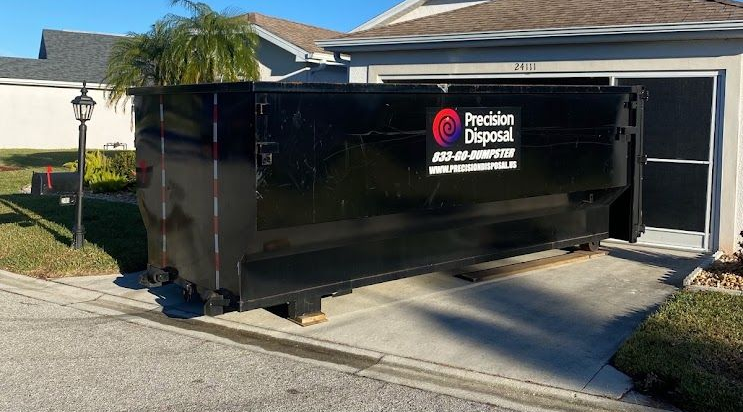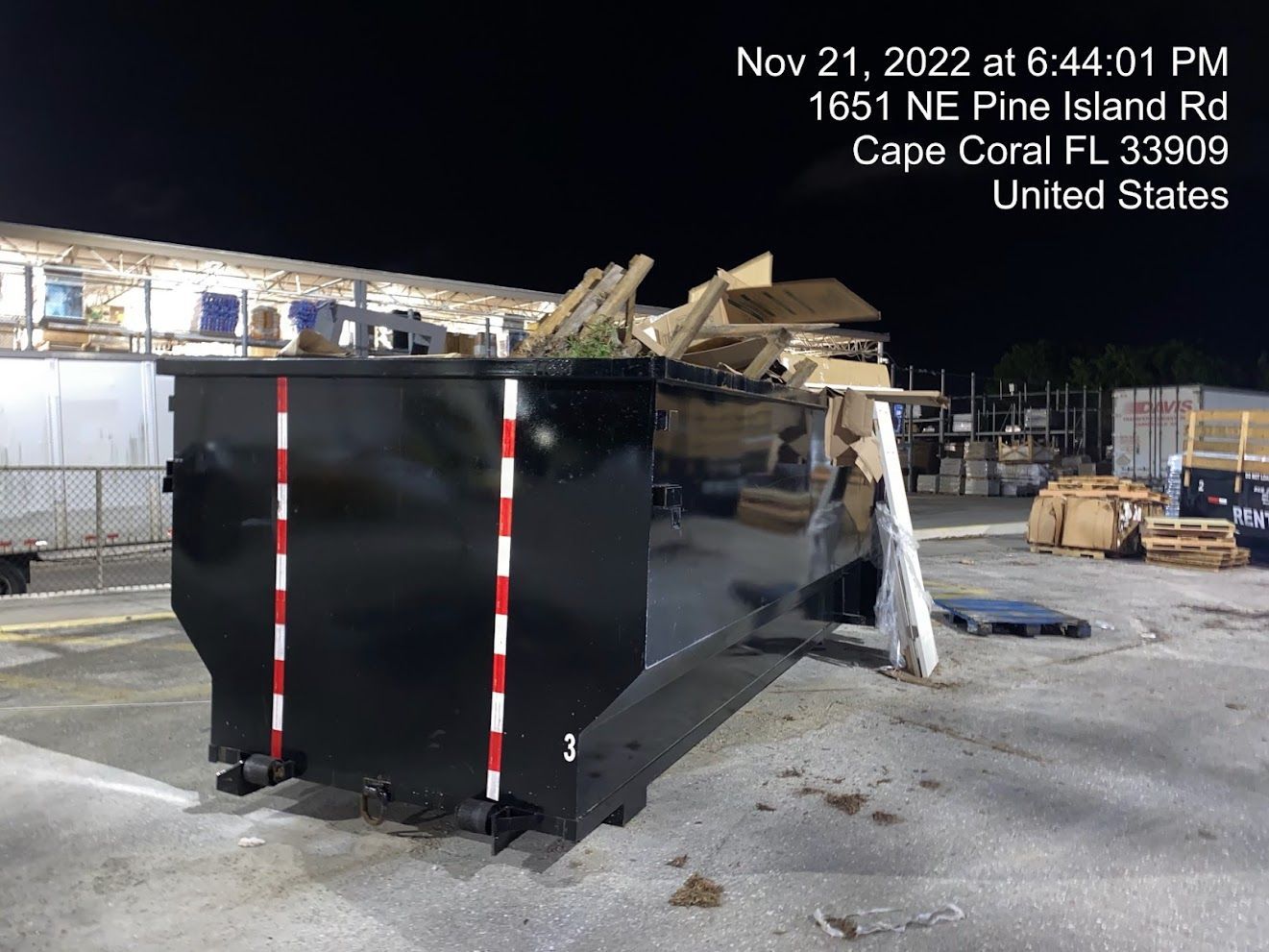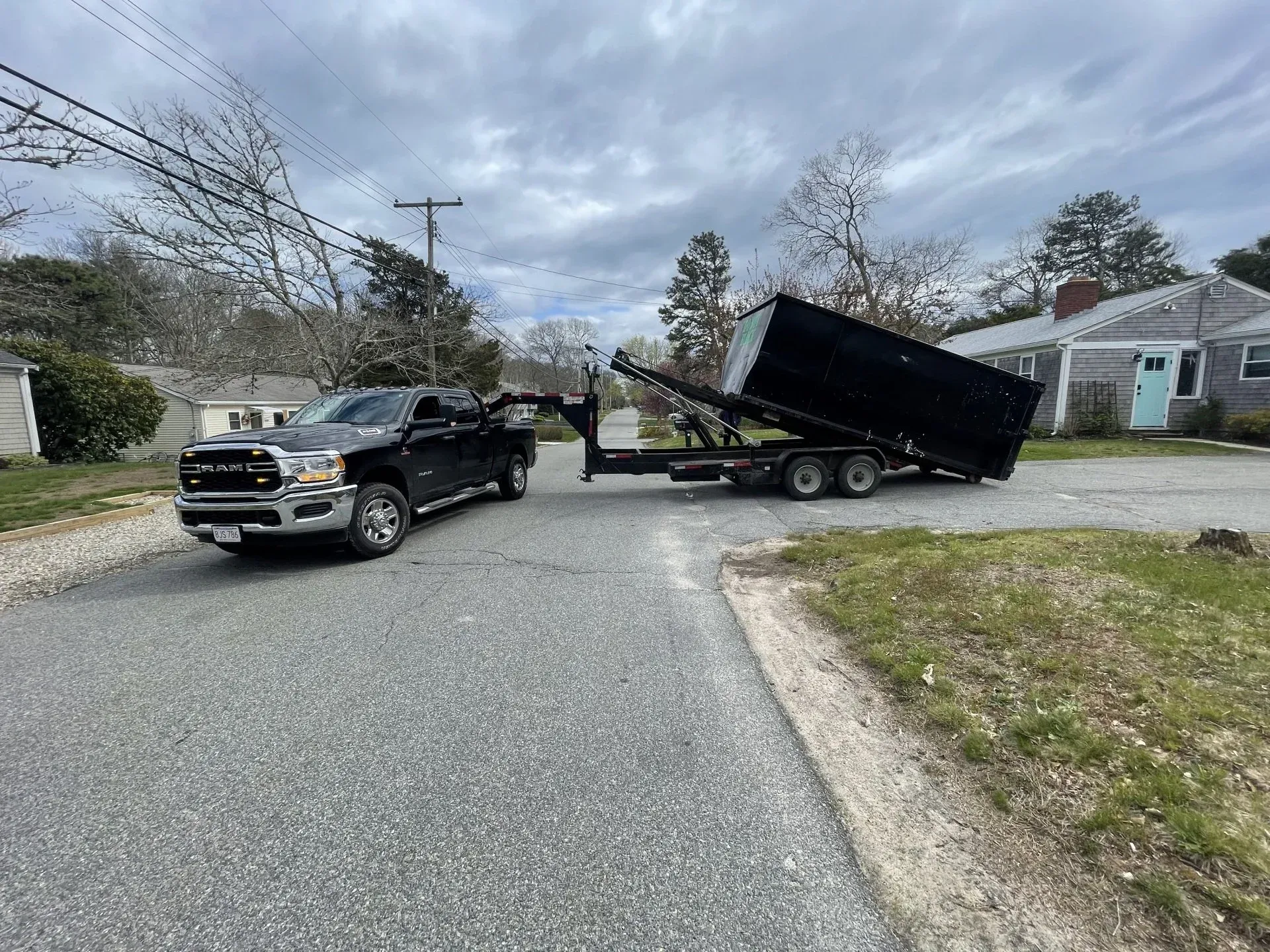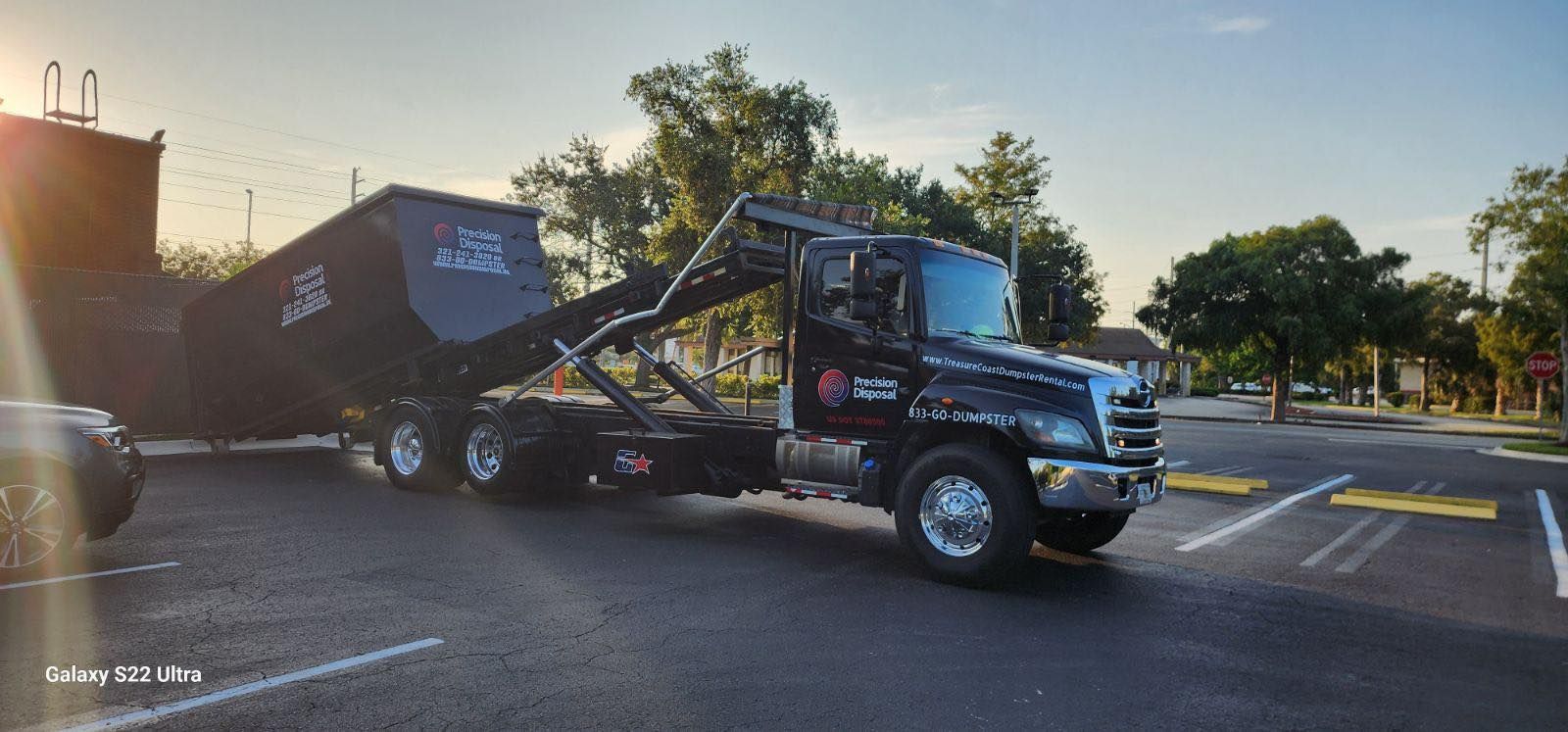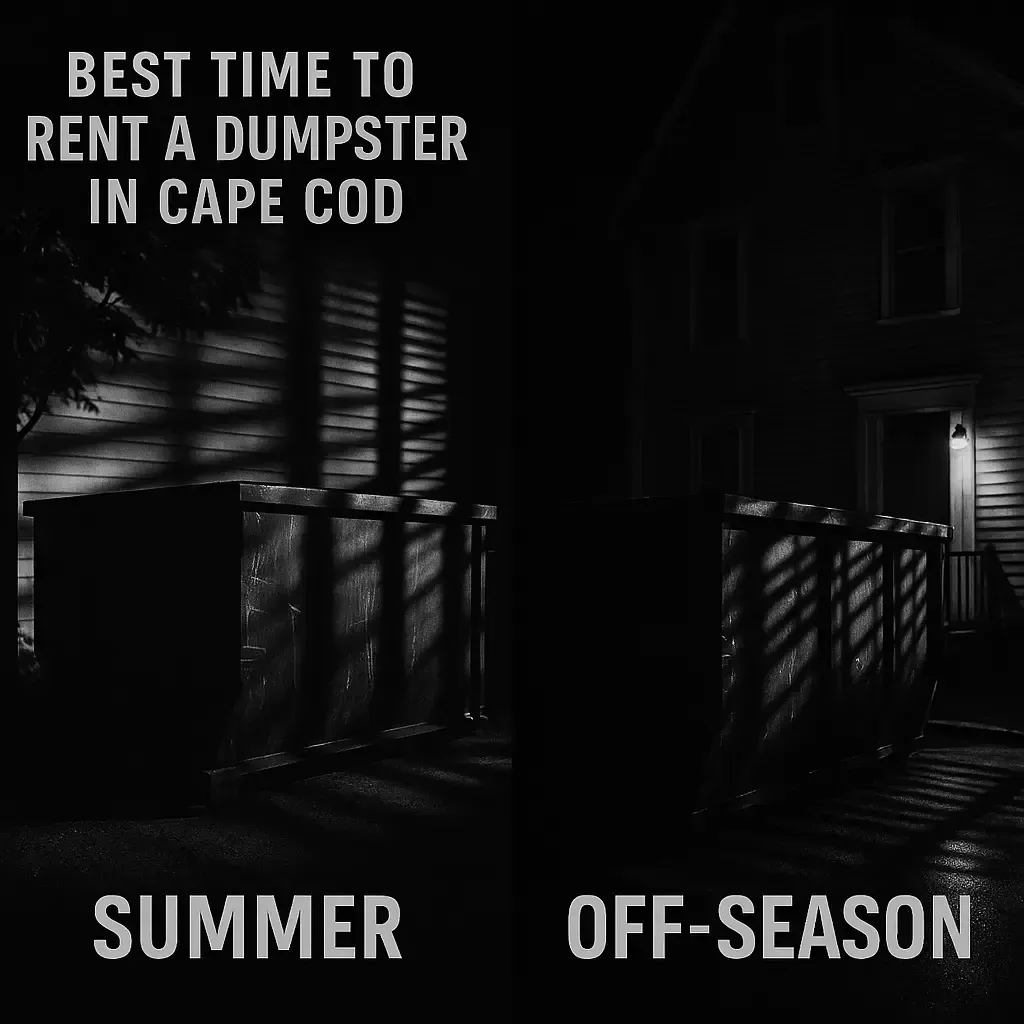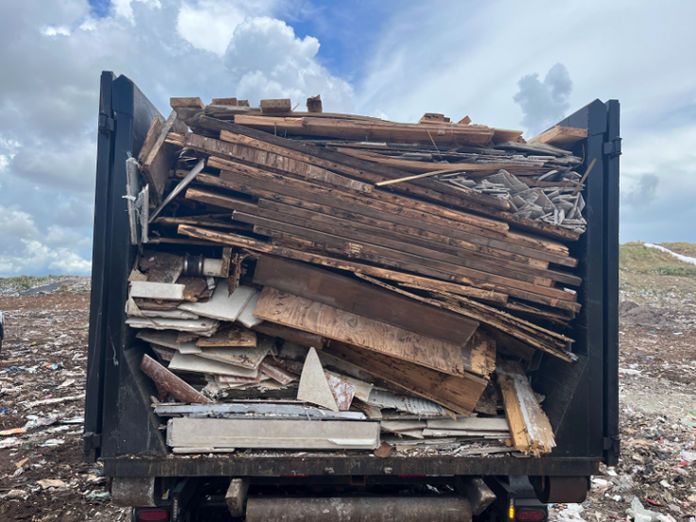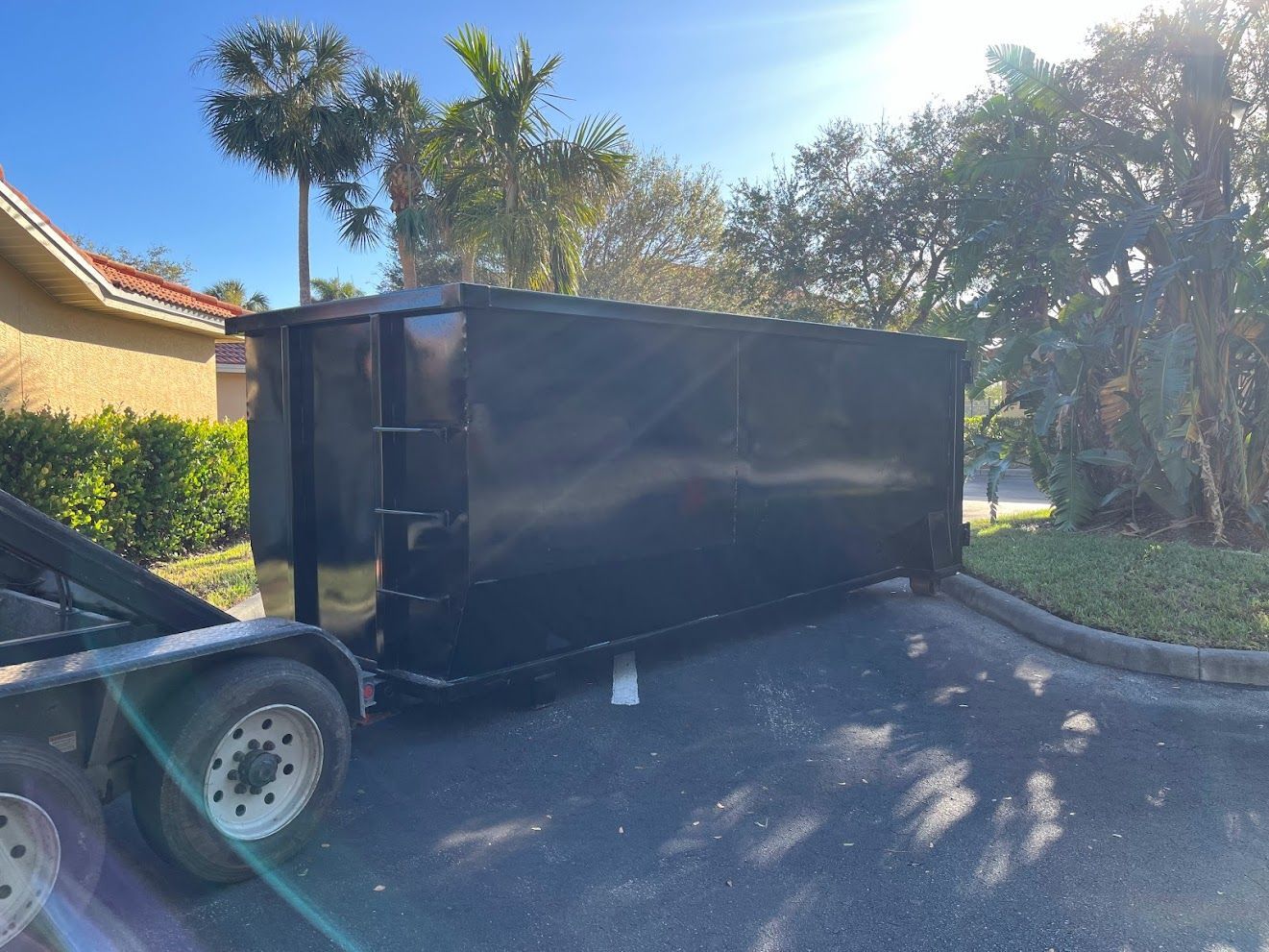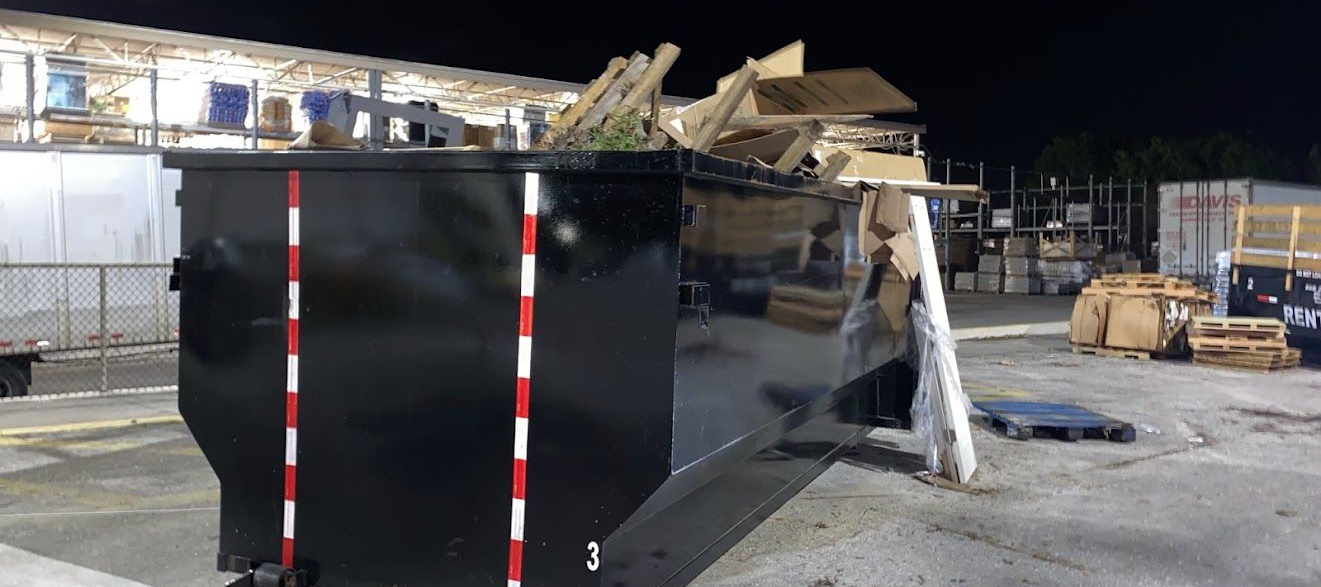Roofing Dumpster Guide: From Roof Squares to the Right Dumpster
For Homeowners, Contractors and Roofers alike: A guide when renting a dumpster for roof work:
Roof jobs are weight jobs. If you size for volume instead of density, you’ll pay for it. Here’s a simple framework that crews and homeowners can follow without guessing.
Step 1: figure out your roof squares (fast)
- Measure each roof plane (length × width in feet), add them up, divide by 100 to get squares.
- Add 10–15% for waste, valleys, and odd cuts.
- Note layers (one layer vs. two) and material type (asphalt, tile, metal, cedar)—this is your weight signal.
Step 2: choose size by roof squares (asphalt shingles)- choose by weight not volume
Squares drive weight. Pick by squares, then adjust for extra layers.
Recommended sizes (1 layer asphalt, dry)
Recommended sizes (1 layer asphalt, dry)
Roof Squares Dumpster Size Notes
≤ 15 squares 10-yard Keep flat, below the rails.
16–25 squares 15-yard Good balance of floor space + weight.
26–35 squares 20-yard Watch fill height; call for swap at the rail.
36–50 squares 30-yard Load flat/level; plan a mid-job swap if you’re nearing the rails.
51–65 squares 30-yard + planned swap Book the swap up front so crews don’t heap.
- > 65 squares 30-yard + multiple swaps (or two cans) Keep turnover moving; never mound.
A good rule of thumb is to carry 275lb per sq for single layer
Step 3: schedule swaps to match crew pace
- For single-day tear-offs, book a midday swap so shingles aren’t stacked above the rail.
- For multi-day roofs, plan end-of-day swaps and tarp overnight.
- Keep the driveway clear for the truck at both swap times.
How to load a roofing dumpster (so it actually hauls)
- Stage bundles/tear-off debris by the door; load heavy first, low and centered, front-to-back.
- Keep the top flat; don’t cone piles.
- Fill corners/gaps with felt, flashing, and light materials last.
- Stop at the rail and latch the door before topping with light debris from the sides.
- No liquids, fuels, adhesives/primers, propane cylinders, batteries, or mercury bulbs from attic finds.
What blows up roofing budgets
- “We’ll just get a 10/15 and be careful.” You won’t be—dense debris wins, and swaps cost money, get bigger with discounted tonnage and save 2 ways
- Blocked approaches. Parked cars, pallets, or low branches force trip charges and delays.
MA/FL/RI callouts
- Massachusetts: Multiple shingle layers are common on older homes. Budget two swaps for big capes or colonials. Winter means clear, salted access for set/pick.
- Florida: Storm repairs surge—book earlier and tarp nightly. Tile roofs are common and extremely dense: 10-yard with frequent swaps.
- Rhode Island: Tight, hilly streets and small driveways favor 10–15-yard cans placed with precision. Plan set/pick windows so the lane is open for the truck.
Crew-day checklist (pin this to the board)
- Squares calculated (+10–15% waste), layers counted, material type confirmed
- Dumpster sizes booked correctly and in excess of anticipated volume needs
- Swap times on the calendar; driveway kept clear at both times
- Plywood laid, drop zone marked, overhead clearance checked
- Magnet sweep tools ready for nails; tarp staged for overnight
- Restricted items staged separately (no fuels/adhesives/propane/batteries/mercury bulbs)
FAQs
Q: What size dumpster should I use for asphalt shingles by squares?
A: Use the largest can you can set safely. As a rule of thumb:
- >20 squares: 15 yd (single haul)
- 20-25 squares: 20–25 yd (single haul)
- 26–42 squares: 25-30 yd (single haul, keep flat/below rails)
- 43–55 squares: 30 yd
- >55 squares:30 yd (may require swap)
Q: Can I run a 30-yard for most roofs?
A: Yes. We run 30s for roofs routinely. The keys are a flat, level load at/below the rails, and pulling the can when you reach your internal stop line—don’t heap.
Q: How do extra layers impact the plan if I’m thinking in squares?
A: Treat extra layers as added squares. A second layer typically behaves like +40-50% more squares. Stay with 25/30 yd and plan one extra haul in the same band.
Q: When do I actually need a second haul on asphalt?
A: When a flat, level load in a 30 hits your internal stop line—usually around 43–55 squares for single-layer dry tear-offs, sooner if wet/heavy. Pull it; never mound- also consider damage potential of extremely heavy dumpsters on the delivery surface/Driveway- not just what the truck can haul.
Q: Is a 25-yard enough for 30–35 squares?
A: Often, yes—if access limits you and you keep the load flat. If you have room, a 30 gives safer headroom and reduces the risk of heaping and generally comes with more discounted tonnage.
Q: What about tile/slate/concrete roofs (common in FL)?
A: These are far denser than asphalt. Still set the largest safe can (15/20), but expect weight to land you at 1–3 total hauls for the same squares where asphalt might be a single haul.
Q: Why not use multiple small cans instead of one big can?
A: Multiple small pulls are almost always slower and more expensive in total trips. One 25/30 with an additional haul only when needed is the efficient, cost-smart path.
Q: How high can I load the can?
A: At or below the rails. The tarp must lie flat. Anything above the rails or sticking out is unsafe, illegal to go down the road and won’t be hauled.
Q: What’s a “stop line,” and why use it?
A: A visual mark inside the 30 that tells crews “call the pull here.” It prevents overfill, keeps you legal on the road, and avoids reloads.
Q: Does rain change the plan?
A: Yes—water weight is real. Tarp between passes if possible. After heavy rain, assume the load behaves like more squares and be ready for an extra haul.
Q: Any placement rules for fast, clean pulls?
A: Clear a straight approach (60–80 ft), check 10–12 ft overhead clearance, lay plywood on pavers/soft ground, and keep cars out of the swing path at swap times.
Q: What can’t go in the roofing dumpster?
A: No liquids (adhesives/primers, fuels), propane/pressurized cylinders, batteries, or mercury items. Keep those out to avoid rejections and delays.
Q: Do I need a permit if the can sits in the street?
A: Driveways typically don’t need one; street/sidewalk placements often require a ROW/obstruction permit. Check your city’s DPW/engineering page and also local fire departments- generally your contractor will know.
Q: How do you protect driveways and job sites?
A: Plywood is common under wheels/rails, precise drop zone, and a flat, centered load. Precision Disposal uses 2x10 or bigger for roofing projects to better disperse the weight. In hot/cold extremes, confirm set/pick windows and surface conditions.
Q: What about nails and debris around the site?
A: Load flat, keep the door area clean, and run a magnet sweep at the end of each day. It’s faster than tire claims and callbacks.
Q: Safety note—why is heaping a big deal on the road?
A: Overfilled loads shed debris (nails, shingles, wood) into traffic and increase risk of accidents and fines. Overweight cans also lengthen stopping distance and stress brakes/axles. Keep it flat and legal.

